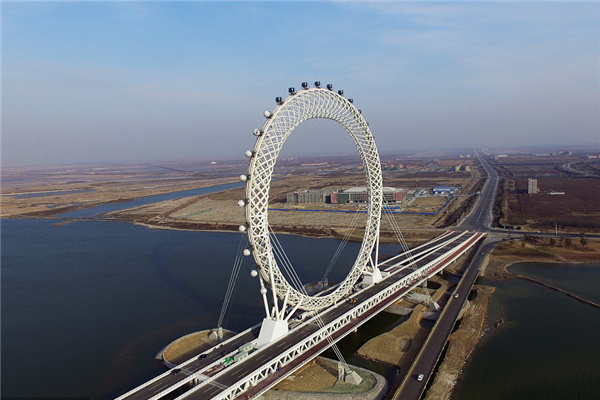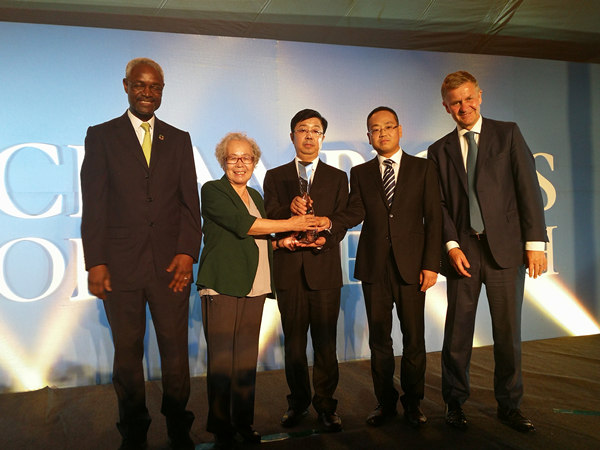

HONG KONG: With the stock market debut of hot-pot chain Little Sheep on June 12, brokers such as Cazenove are touting a new theme to investors hungry for a slice of China's consumer boom: home-grown branded restaurants.
But food prices in the world's fastest growing major economy are soaring, and experts say a lack of pricing power is squeezing firms in a crowded market where scale is the key to long term success and profitability.

Little Sheep, Ajisen (China), Cafe de Coral, Fairwood, and international behemoths Yum Brand's KFC and Pizza Hut, McDonald's, and Burger King are all catering to growing demand for fast food.
Chinese appetite for on-the-go burgers, fried chicken, pizza, and noodles is expected to make fast food a $66 billion industry in China by 2009, up from $51.7 billion last year, according to research firm Euromonitor.
Despite the fast food industry's challenges, valuations are high as investors bet that Chinese hunger for dining out and more modern lifestyles won't abate any time soon.
Shares in Ajisen, a specialist in Japanese-style noodles, are trading at roughly more than 28 times forecast earnings, pricier than Li Ning's 24 times. Ajisen has gained more than 51 percent since its March 2007 debut, but has shed over 7 percent in the past month due to market turmoil and general inflation fears.
Cazenove has an outperform recommendation on Ajisen, while Merrill Lynch has a buy rating. But JP Morgan has an underweight rating on the stock, and ABN AMRO has a sell rating, citing difficulties in cost management.
"We remain positive on the long-term fundamentals of the company given its profitable restaurant concept and large proven market size," Cazenove says about Ajisen in a research note on China restaurants.
Little Sheep's stock has lost nearly a fifth of its value since its June 12 debut, racked by recent inflation-driven market volatility.
Firms are struggling to pass on costs to consumers in a year when inflation has hit 11-year highs, even though China's per capita urban disposal incomes are expected to rise 13.6 percent this year to 15,663 yuan, according to Sun Hung Kai Financial.
"For department stores, they have high-end branding, margin expansion, they can pass on costs to consumers. But for fast food companies it's proving to be difficult especially when food costs are surging," says JP Morgan consumer sector analyst Ebru Sener Kurumlu.
"They are not able to raise prices. The problem is they have a few flagship products the consumer knows so they will keep those products at the same price. They renew prices on the remaining parts of the menu, but not by that much."
Food costs account for around a quarter of fast food chains' cost structure, analysts say. Adding pressure is an extremely fragmented market where the top five Chinese players account for only 3 percent of the market.
That compares to the roughly 20 percent share controlled by top Chinese sportswear firms such as Li Ning and Anta in that segment of the consumer market.
Ramen or hot pot?
As of now, global investors have limited options to play Chinese-branded fast food chains: Ajisen, Mongolian-style mutton specialist Little Sheep, and Hong Kong-focused Cafe de Coral and Fairwood, though those firms only have limited footprints in mainland China.
Cafe de Coral, which had three dozen stores in China as of last September, plans to have 500 by 2011, according to Kim Eng Securities.
And analysts say more listings are in the works, as privately held chains want to tap the markets for capital in order to keep up with newly listed competitors.
Shanghai-based Xiao Nan Guo is said to be seeking a listing in Hong Kong this year, as is higher-end restaurant chain South Beauty, but further details are yet to emerge.
Ajisen (China), which combines fast food and traditional restaurant elements selling Japanese-style dishes, aims to have 1,000 restaurants over the next three to five years, a five-fold rise from the number it had at the end of 2007.
"We are acquainted with the catering culture and the taste of the customers in the PRC," says Alan Zheng, CFO of Ajisen on the company's plans in the People's Republic of China. "As such, we gradually penetrate towards second or third tier cities with strong growth potential."
Betting on fast food firms is tricky, analysts say, as each caters to different tastes, and offers different dining experiences.
Ajisen (China), established in 1995 as the sole franchisee to the Japanese firm founded in 1968, has faster table turnover than Little Sheep, but the hot pot specialist has higher per capita spending, Cazenove says.
Global grease
Despite vast growth potential, Chinese food firms are relative latecomers to the country's brand building drive.
Global fast food firms long ago placed their bets on the so-called middle kingdom, hoping to hook locals on Western food.
Yum Brands, owner of Kentucky Fried Chicken (KFC) and Pizza Hut chains, was the first foreign fast food chain to enter the market with a KFC branch in 1987, and is leading by a wide margin.
Today, Yum operates more than 2,000 KFC stores in the country - more than double McDonald's 900 outlets - and booked roughly 15.8 billion yuan ($2.3 billion) of sales in 2007 for its mainland restaurants, which last year yielded more than a quarter of the firm's $1.36 billion in operating profit.
That compares to Ajisen's roughly $116 million mainland revenue and Little Sheep's $105.4 million.
Yum has also tailored its KFC menu to satisfy local tastes, serving up preserved egg porridge, fried dough, and other domestic foods.
"One of the biggest questions is whether they (restaurants) can localize - every region of China has a different taste," says Shadow Lau, an analyst at Kim Eng. "Taste is the key issue."
Agencies
(China Daily 06/30/2008 page7)













